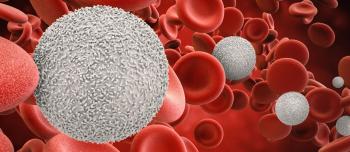In April, the Daily Pennsylvanian, the University of Pennsylvania’s (Penn) independent student news organization, published an article providing an overview of the significant contributions made by gene therapy researchers. The piece recounts the challenges and successes encountered by Penn investigators during the past 20 years.
“You could fill up several issues of [The Daily Pennsylvanian] with all of the gene-therapy research Penn has been involved in,” said Susan Phillips, Chief of Staff, School of Medicine. Hemophilia, cancer, HIV, eye diseases and many other conditions have been targeted by Penn researchers, with the goal of developing genetically deliverable therapies or even cures. The actual delivery of genetic material to elicit the desired therapeutic response—for example, the production of clotting factor in hemophilia patients--continues to be one of the foremost challenges for researchers.
Many gene therapy trials conducted at Penn and elsewhere use adeno-associated viruses (AAVs, which do not cause disease) as delivery vehicles, or vectors, of healthy genes. Ideally, AAVs deliver the genetic material into living cells to sustain therapeutic effect without causing disease or triggering significant immune responses. However, finding the ideal vector for a specific disease can be tricky. “There’s a whole science around using the right virus vectors to try to eliminate tumor effects and eliminate other inflammatory effects or other negative consequences of the virus,” Glen Gaulton, professor of Pathology and Laboratory Medicine at Penn.
After the 1999 death of Jessie Gelsinger, an 18-year-old patient with a rare genetic disorder enrolled in a gene therapy trial at Penn, gene therapy trials nationwide came to a halt and were re-evaluated. Since then researchers have focused on developing optimal AAVs.
“I think what I learned from our early experience is that the technology that was available to us when we started … was not adequate,” said James Wilson, MD, PhD, the former head of Penn’s Institute for Human Gene Therapy, which dissolved after Gelsinger’s death. Wilson and his lab have worked on enhancing AAVs during the last 20 years. Their work generates approximately 2,000 AAVs yearly, which are distributed to more than 30 countries for use in laboratory and clinical trials.
In addition, investigators have acknowledged the importance of using animal models that more closely resemble humans biologically and genetically. “We have good animal models, which we didn’t really have back in the Gelsinger days,” said Arthur Caplan, PhD, director of Penn’s Center for Bioethics. “Much better animal work is being done prior to work in humans, which always is both prudent and safer.”
Katherine High, MD, a professor at Penn who conducted gene therapy clinical trials for hemophilia more than a decade ago, is now in the early stages of a new clinical trial. She says there have been “multiple examples of successful gene therapy that can be pointed to. Twenty years is pretty typical for a completely new class of therapeutics.”
“I think the future of gene therapy is actually strong,” said Caplan, citing its recent intersection with stem cell research. “It is very interesting to watch and very unexpected. I mean, nobody could have predicted it.”
Source: The Daily Pennsylvanian, April 12, 2011





